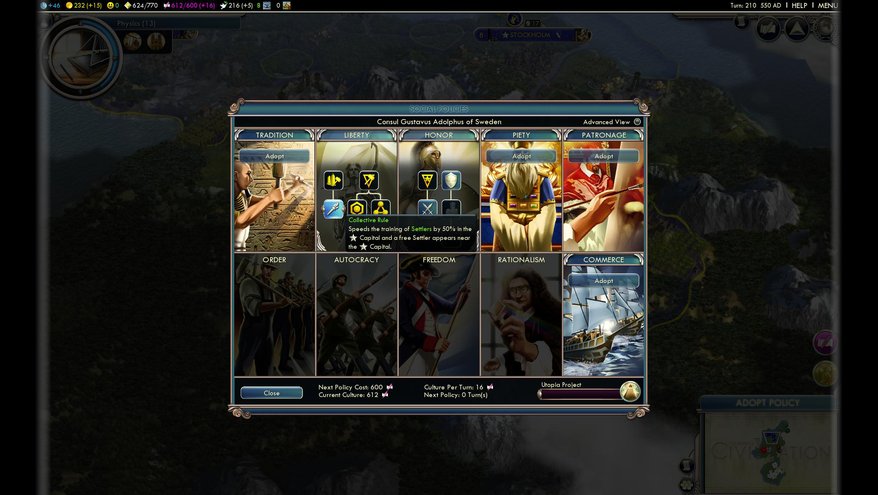
The War of Three Banners
The fifth century is off to a pretty good start. My economy is doing great, but my Happiness is close to going negative. I start researching Physics so I can build the Norte Dame wonder, which will give me a big bonus to Happiness and Faith.
430 A.D.: The first mint is constructed in Stockholm, printing coins bearing the visage of the first High King of Sweden.
490 A.D.: Denmark requests a gift of luxury resources from Sweden. They happily accept, having much to spare.
I made a similar deal like this with Austria. It might seem like charity, but as you'll recall, I get Great Person points for every civ I declare friendship with, so I'm investing in keeping the Danes on good terms.
550 A.D.: The progressive Swedish government presses their monarch to sign the Book of Sovereignty. It puts into effect a system of collective rule, giving more power to Lord-Governors on the local level and taking power away from the High King. Rebels in favor of a strong monarch are quickly put down by the combined might of the lords of the West, the Vale, and the Storm. The short, one-sided conflict comes to be known as the War of Three Banners.
This policy gives me a free settler, and lets me train settlers faster. It also completes the Liberty policy tree, which grants me a free Great Person. I choose a Great Scientist.
And no, Civ doesn't have a rebellion mechanic. But it adds flavor to the narrative to imply struggles within my borders, so I've given myself permission to do so.
Keep up to date with the most important stories and the best deals, as picked by the PC Gamer team.
565 A.D.: A Swedish Great Scientist founds the Academy of Stockholm.
Great Scientists can be expended for a one-time, huge boost to Science, or they can build an Academy that gives you ongoing Science. The latter is clearly the better long-term option, especially this early in the game.
Len Hafer is a freelancer and lifelong PC gamer with a specialty in strategy, RPGs, horror, and survival games. A chance encounter with Warcraft 2: Tides of Darkness changed her life forever. Today, her favorites include the grand strategy games from Paradox Interactive like Crusader Kings and Europa Universalis, and thought-provoking, story-rich RPGs like Persona 5 and Disco Elysium. She also loves history, hiking in the mountains of Colorado, and heavy metal music.

